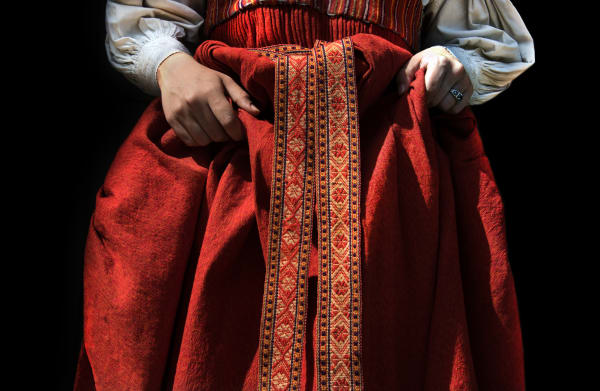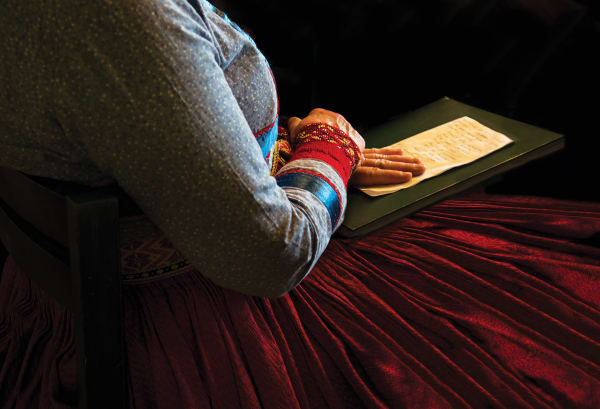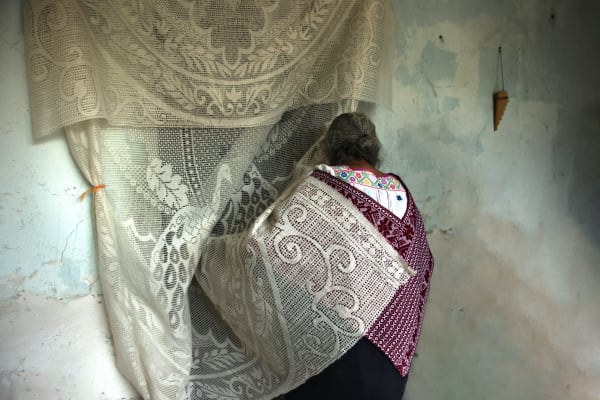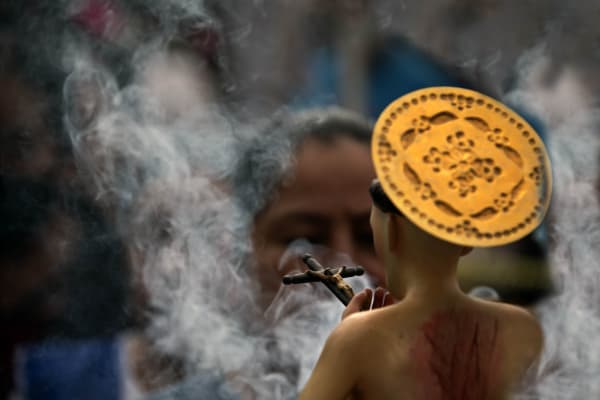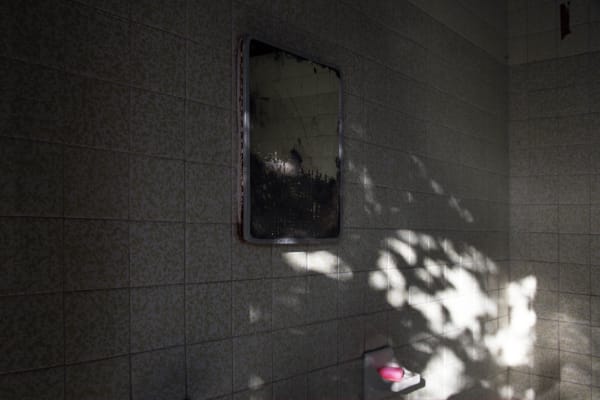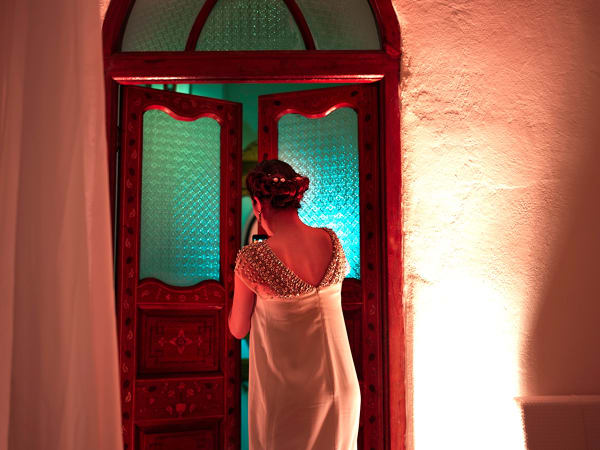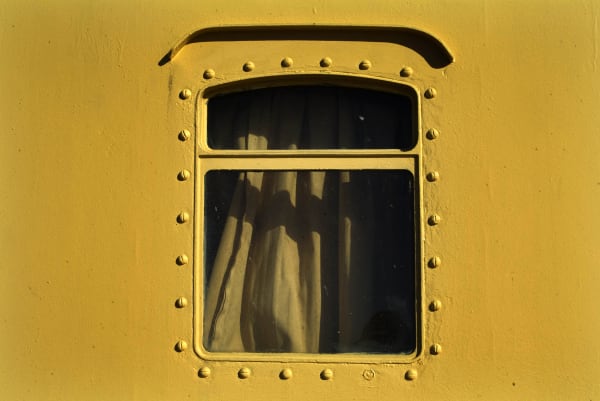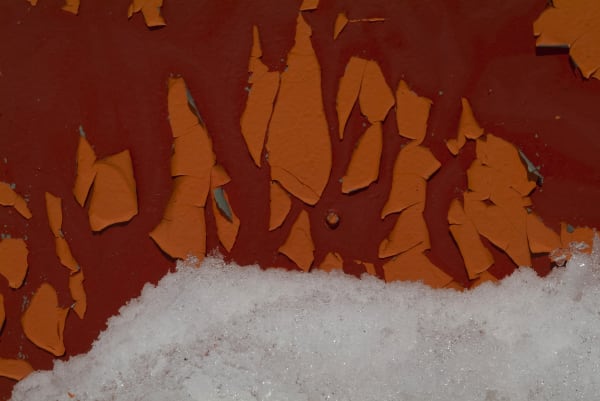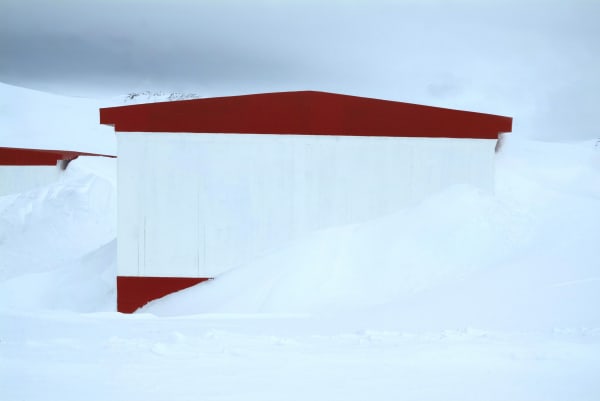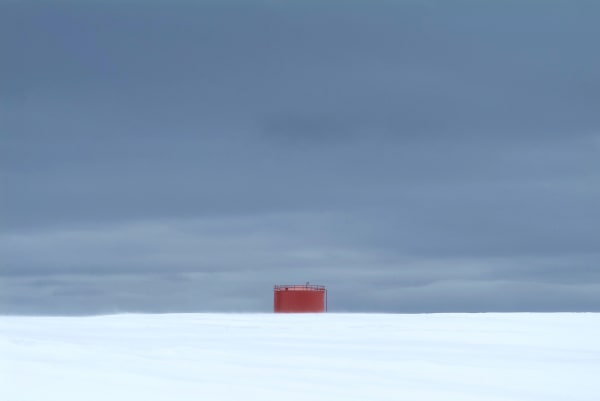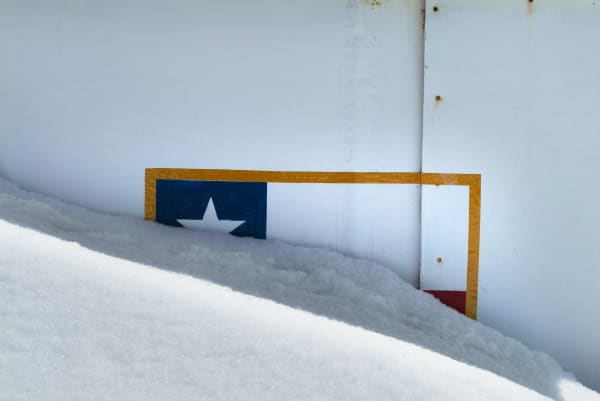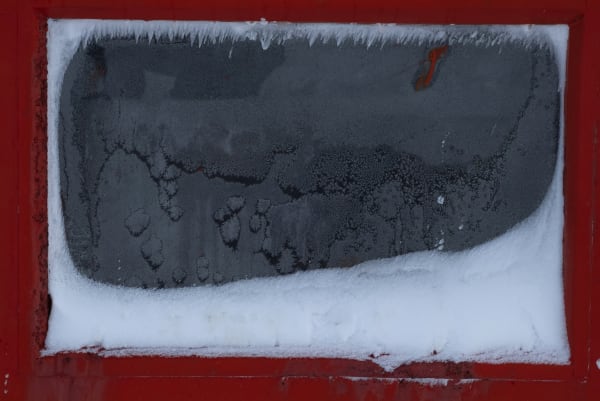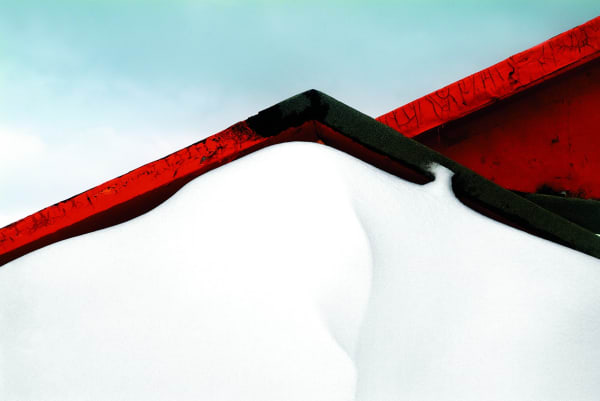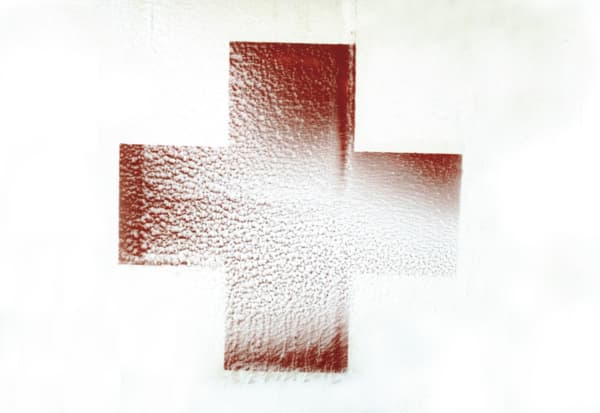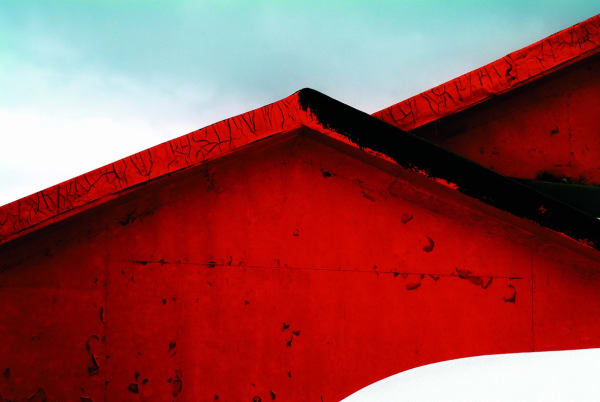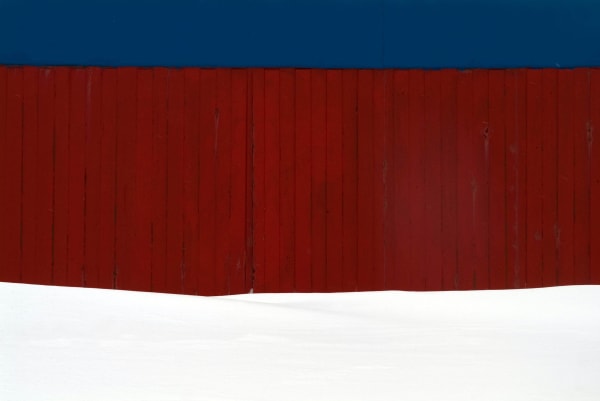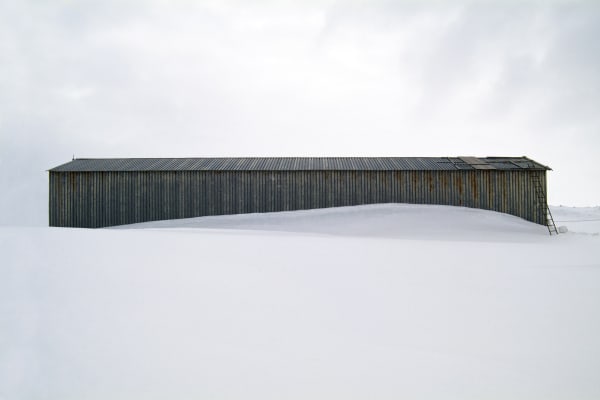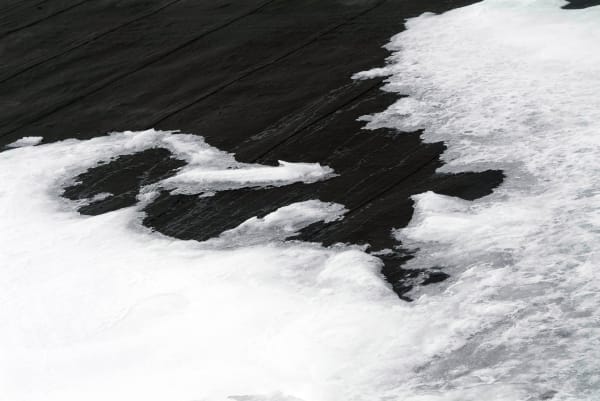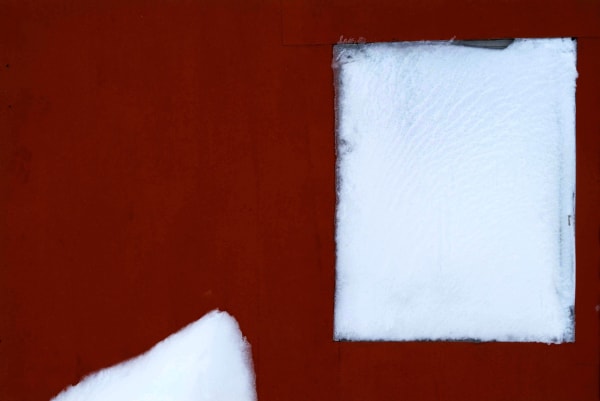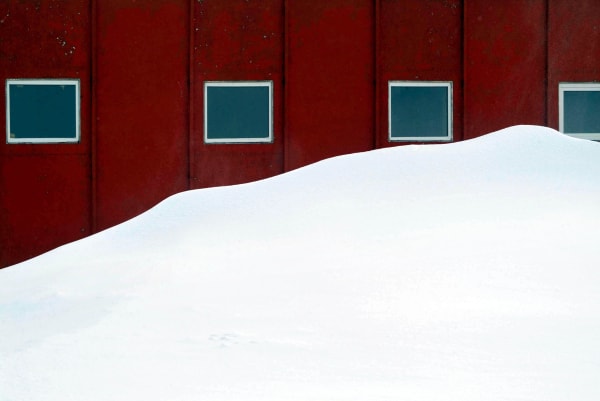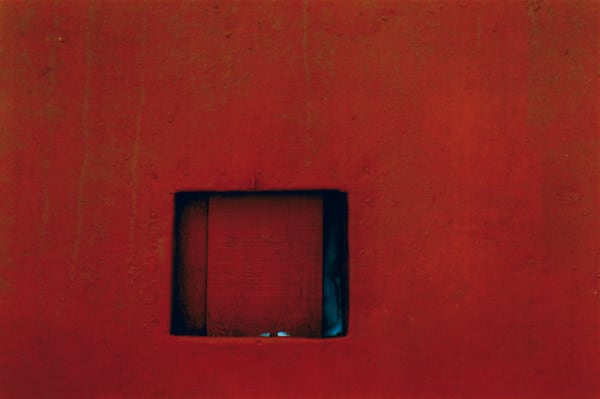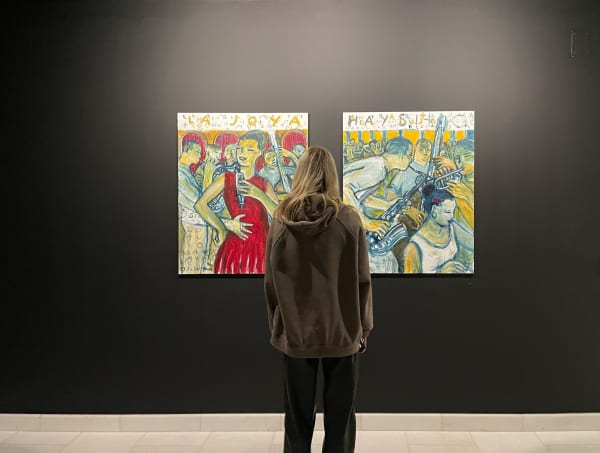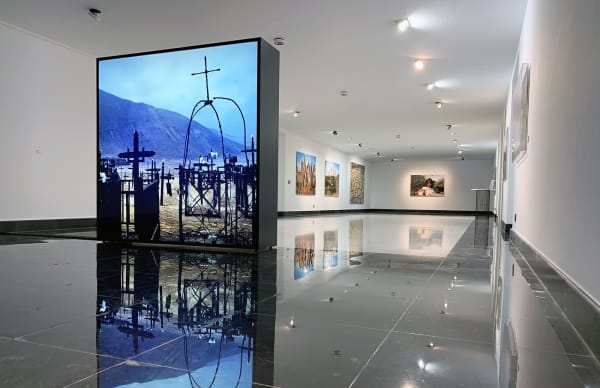"My interest is directed at exploring those geographical and human territories that are isolated, precarious and forgotten".
Magdalena Correa is drawn to exploring geographical and human spaces that are isolated and largely unknown, yet coexist alongside everyday life. These places often remain outside of public concern, as they are distant from the comfort of modern existence and, in many cases, are so difficult to access that they do not even appear on maps.
Her work is deeply rooted in firsthand experiences with local communities and extensive fieldwork in these remote territories. Through photography and video, she captures the essence of these environments, using them as "raw material" for her artistic process. This material is later reinterpreted from her personal perspective, with the aim of fostering awareness and reflection in the viewer about the human life that unfolds in these challenging and often invisible spaces.
-
 Magdalena CorreaSuiti 2, 2017Cotton on dibon71 x 110 cm1/3Series: SuitiView more details
Magdalena CorreaSuiti 2, 2017Cotton on dibon71 x 110 cm1/3Series: SuitiView more details -
 Magdalena CorreaSuiti 16, 2017Cotton on dibon71 x 110 cm1/3Series: SuitiView more details
Magdalena CorreaSuiti 16, 2017Cotton on dibon71 x 110 cm1/3Series: SuitiView more details -
 Magdalena CorreaLas caras de la tierra 1, 2021Photography on dimmable light-boxImage: 50 x 74 cm
Magdalena CorreaLas caras de la tierra 1, 2021Photography on dimmable light-boxImage: 50 x 74 cm
Lightbox: 58 x 84 x 9 cm1 of 3Series: Las caras de la tierraView more details -
 Magdalena CorreaLas caras de la tierra 3, 2021Photography on dimmable light-boxImage: 15 x 25 cm
Magdalena CorreaLas caras de la tierra 3, 2021Photography on dimmable light-boxImage: 15 x 25 cm
Lightbox: 34 x 48 x 9 cm1 of 3Series: Las caras de la tierraView more details -
 Magdalena CorreaLas caras de la tierra 4, 2021Photography on dimmable light-boxImage: 15 x 25 cm
Magdalena CorreaLas caras de la tierra 4, 2021Photography on dimmable light-boxImage: 15 x 25 cm
Lightbox: 34 x 48 x 9 cm1 of 3Series: Las caras de la tierraView more details -
 Magdalena CorreaDe la serie Suiti (duplicate), 2019Photography180 x 268 cm1/3View more details
Magdalena CorreaDe la serie Suiti (duplicate), 2019Photography180 x 268 cm1/3View more details -
 Magdalena CorreaDe la serie Suiti , 2017Photography76 x 85 cm1/3View more details
Magdalena CorreaDe la serie Suiti , 2017Photography76 x 85 cm1/3View more details -
 Magdalena CorreaDe la serie Suiti , 2017Photography43,5 x 43,5 cm1/3View more details
Magdalena CorreaDe la serie Suiti , 2017Photography43,5 x 43,5 cm1/3View more details -
 Magdalena CorreaDe la serie Suiti , 2017Photography47,5 x 81,8 cm1/3View more details
Magdalena CorreaDe la serie Suiti , 2017Photography47,5 x 81,8 cm1/3View more details -
 Magdalena CorreaDe la serie Suiti , 2017Photography70 x 104 cm1/3View more details
Magdalena CorreaDe la serie Suiti , 2017Photography70 x 104 cm1/3View more details -
 Magdalena CorreaDe la serie Suiti , 2017Photography122 x 180 cm1/3View more details
Magdalena CorreaDe la serie Suiti , 2017Photography122 x 180 cm1/3View more details -
 Magdalena CorreaDe la serie Suiti , 2017Photography45,7 x 68,5 cm1/3View more details
Magdalena CorreaDe la serie Suiti , 2017Photography45,7 x 68,5 cm1/3View more details -
 Magdalena CorreaDe la serie Suiti , 2017Photography23,5 x 33 cm1/3View more details
Magdalena CorreaDe la serie Suiti , 2017Photography23,5 x 33 cm1/3View more details -
 Magdalena CorreaDe la serie Suiti , 2017Photography61 x 103,5 cm1/3View more details
Magdalena CorreaDe la serie Suiti , 2017Photography61 x 103,5 cm1/3View more details -
 Magdalena CorreaDe la serie Wayu, 2016Photography107 x 170 cm1/3View more details
Magdalena CorreaDe la serie Wayu, 2016Photography107 x 170 cm1/3View more details -
 Magdalena CorreaDe la serie Wayu, 2016Photography135 x 180 cm1/3View more details
Magdalena CorreaDe la serie Wayu, 2016Photography135 x 180 cm1/3View more details -
 Magdalena CorreaFrom the Niveo series, 2016Photography67 x 100 cm
Magdalena CorreaFrom the Niveo series, 2016Photography67 x 100 cm
Framed: 86 x 119 cmsEd: 2/3View more details -
 Magdalena CorreaFrom the Niveo series, 2016Photography67 x 100 cm
Magdalena CorreaFrom the Niveo series, 2016Photography67 x 100 cm
Framed: 86 x 119 cmsEd: 2/3View more details -
 Magdalena CorreaFrom the Wayúu series, 201697 x 130 cmsEd: 1/3 + PAView more details
Magdalena CorreaFrom the Wayúu series, 201697 x 130 cmsEd: 1/3 + PAView more details -
 Magdalena CorreaLuxury has a new adress, 2015Photography100 x 130 cm2/3View more details
Magdalena CorreaLuxury has a new adress, 2015Photography100 x 130 cm2/3View more details -
 Magdalena CorreaNiveo 1, 2008Photography119 x 80 cmsEdition of 3 plus 1 artist proofSeries: NiveoView more details
Magdalena CorreaNiveo 1, 2008Photography119 x 80 cmsEdition of 3 plus 1 artist proofSeries: NiveoView more details -
 Magdalena CorreaNiveo 10, 2008Photography119 x 80 cmsEdition of 3 plus 1 artist proofSeries: NiveoView more details
Magdalena CorreaNiveo 10, 2008Photography119 x 80 cmsEdition of 3 plus 1 artist proofSeries: NiveoView more details -
 Magdalena CorreaNiveo 11, 2008Photography119 x 80 cmsEdition of 3 plus 1 artist proofSeries: NiveoView more details
Magdalena CorreaNiveo 11, 2008Photography119 x 80 cmsEdition of 3 plus 1 artist proofSeries: NiveoView more details -
 Magdalena CorreaNiveo 13, 2008Photography119 x 80 cmsEdition of 3 plus 1 artist proofSeries: NiveoView more details
Magdalena CorreaNiveo 13, 2008Photography119 x 80 cmsEdition of 3 plus 1 artist proofSeries: NiveoView more details -
 Magdalena CorreaNiveo 14, 2008Photography119 x 80 cmsEdition of 3 plus 1 artist proofSeries: NiveoView more details
Magdalena CorreaNiveo 14, 2008Photography119 x 80 cmsEdition of 3 plus 1 artist proofSeries: NiveoView more details -
 Magdalena CorreaNiveo 15, 2008Photography119 x 80 cmsEdition of 3 plus 1 artist proofSeries: NiveoView more details
Magdalena CorreaNiveo 15, 2008Photography119 x 80 cmsEdition of 3 plus 1 artist proofSeries: NiveoView more details -
 Magdalena CorreaNiveo 17, 2008Photography119 x 80 cmsEdition of 3 plus 1 artist proofSeries: NiveoView more details
Magdalena CorreaNiveo 17, 2008Photography119 x 80 cmsEdition of 3 plus 1 artist proofSeries: NiveoView more details -
 Magdalena CorreaNiveo 18, 2008Photography119 x 80 cmsEdition of 3 plus 1 artist proofSeries: NiveoView more details
Magdalena CorreaNiveo 18, 2008Photography119 x 80 cmsEdition of 3 plus 1 artist proofSeries: NiveoView more details -
 Magdalena CorreaNiveo 19, 2008Photography119 x 80 cmsEdition of 3 plus 1 artist proofSeries: NiveoView more details
Magdalena CorreaNiveo 19, 2008Photography119 x 80 cmsEdition of 3 plus 1 artist proofSeries: NiveoView more details -
 Magdalena CorreaNiveo 2, 2008Photography119 x 80 cmsEdition of 3 plus 1 artist proofSeries: NiveoView more details
Magdalena CorreaNiveo 2, 2008Photography119 x 80 cmsEdition of 3 plus 1 artist proofSeries: NiveoView more details -
 Magdalena CorreaNiveo 20, 2008Photography119 x 80 cmsEdition of 3 plus 1 artist proofSeries: NiveoView more details
Magdalena CorreaNiveo 20, 2008Photography119 x 80 cmsEdition of 3 plus 1 artist proofSeries: NiveoView more details -
 Magdalena CorreaNiveo 21, 2008Photography119 x 80 cmsEdition of 3 plus 1 artist proofSeries: NiveoView more details
Magdalena CorreaNiveo 21, 2008Photography119 x 80 cmsEdition of 3 plus 1 artist proofSeries: NiveoView more details -
 Magdalena CorreaNiveo 3, 2008Photography119 x 80 cmsEdition of 3 plus 1 artist proofSeries: NiveoView more details
Magdalena CorreaNiveo 3, 2008Photography119 x 80 cmsEdition of 3 plus 1 artist proofSeries: NiveoView more details -
 Magdalena CorreaNiveo 4, 2008Photography119 x 80 cmsEdition of 3 plus 1 artist proofSeries: NiveoView more details
Magdalena CorreaNiveo 4, 2008Photography119 x 80 cmsEdition of 3 plus 1 artist proofSeries: NiveoView more details -
 Magdalena CorreaNiveo 5, 2008Photography119 x 80 cmsEdition of 3 plus 1 artist proofSeries: NiveoView more details
Magdalena CorreaNiveo 5, 2008Photography119 x 80 cmsEdition of 3 plus 1 artist proofSeries: NiveoView more details -
 Magdalena CorreaNiveo 6, 2008Photography119 x 80 cmsEdition of 3 plus 1 artist proofSeries: NiveoView more details
Magdalena CorreaNiveo 6, 2008Photography119 x 80 cmsEdition of 3 plus 1 artist proofSeries: NiveoView more details -
 Magdalena CorreaNiveo 7, 2008Photography119 x 80 cmsEdition of 3 plus 1 artist proofSeries: NiveoView more details
Magdalena CorreaNiveo 7, 2008Photography119 x 80 cmsEdition of 3 plus 1 artist proofSeries: NiveoView more details -
 Magdalena CorreaNiveo 8, 2008Photography119 x 80 cmsEdition of 3 plus 1 artist proofSeries: NiveoView more details
Magdalena CorreaNiveo 8, 2008Photography119 x 80 cmsEdition of 3 plus 1 artist proofSeries: NiveoView more details -
 Magdalena CorreaNiveo 9, 2008Photography119 x 80 cmsEdition of 3 plus 1 artist proofSeries: NiveoView more details
Magdalena CorreaNiveo 9, 2008Photography119 x 80 cmsEdition of 3 plus 1 artist proofSeries: NiveoView more details
Magdalena Correa, born in Santiago de Chile, currently lives and works in Madrid. She is a visual artist specializing in photography, video, and printmaking. She holds a Bachelor’s Degree in Fine Arts with a major in Printmaking from the Catholic University of Chile, a PhD in Photography and Video from the Polytechnic University of Catalonia, accredited by ANECA, and a Master’s Degree in Cinematography from ECAM – Madrid School of Cinematography. In addition to her artistic practice, she has been a member of the Research Line "Applications to Audiovisual and Multimedia Systems" in the Engineering Department of the Polytechnic University of Catalonia, where she has explored the intersection of technology and visual storytelling.
Her artistic research focuses on photographic and video projects that document isolated and extreme human-inhabited territories. Throughout her career, she has explored regions that challenge human existence, capturing the tension between landscape, culture, and survival. Her major projects include "Austral" (2006), which examines the remote XI Region of Aysén in Chile, and "La Desaparición" (2008), a study of the vast and desolate deserts of Gobi in China and Mongolia and the Atacama Desert in Chile. In "Níveo" (2011), she investigates life in "Villa Las Estrellas," a Chilean settlement in Antarctica, while "La Rinconada" (2013) documents the world’s highest gold mine, located at 5,600 meters above sea level in Ananea, Peru.
Her work also extends to sociocultural themes, such as the exploration of wealth and excess in Kuwaiti society in "Luxury Has a New Address" (2014) and the traditions of indigenous and endangered communities in "Wayúu" (2015) and "Suiti" (2019), the latter focusing on the Suiti culture in Latvia, recognized as a UNESCO Intangible Heritage.
Her work has been exhibited in numerous prestigious institutions and museums worldwide, including Palacio de la Virreina and Casa Asia in Barcelona, Fundación Telefónica in Chile and Buenos Aires, and various Instituto Cervantes locations in Beijing, Chicago, and São Paulo. Her exhibitions have also been hosted at the Museo de Bellas Artes in Santiago de Chile and Santander, the Centro Andaluz de la Fotografía in Almería, Casa América in Madrid, and the Museo Da Casa Brasileira in São Paulo, among many others.
Through her work, Magdalena Correa investigates themes of cultural identity, environmental extremes, and the fragile relationship between human habitation and nature. Her images capture the poetic and often harsh reality of these territories, creating a profound dialogue between landscape, memory, and survival.
-

The woman condition
Group photo exhibition 9 Jun - 16 Aug 2023- ADRIANA DUQUE - CIUCO GUTIERREZ - MAGDALENA CORREA - BRYAN ADAMS - ANGÉLICA ARBULU - HUBERTUS HOHENLOHE Isolina Arbulu is delighted to present its first photo group exhibition, showcasing...Read more -

Here's looking at you
Group exhibit - Black room 17 Feb - 17 Mar 2023The famous phrase 'Here's looking at you, Kid' from Casablanca is a toast, Americans have been using it since the 20th century, even long before the film. Although there is...Read more -

Lives at the limit
Magdalena Correa 8 Mar - 23 May 2019Magdalena Correa has specialised in artistic projects in which, through photography and video, she shows her sociological research in isolated and extreme territories where human beings live. The artist carries...Read more
-
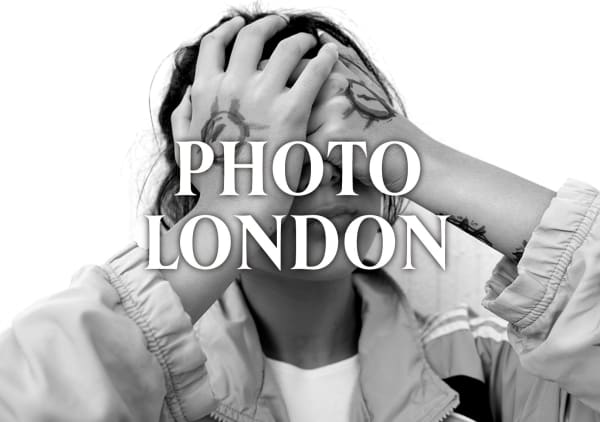
Photo London
Adriana Duque, Magdalena Correa & Angélica Arbulu 10 - 14 May 2023Strength, Beauty and fragility. What it means to be a woman through the eyes of three excepcional female artists. Spanish Contemporary Art gallery Isolina Arbulu...Read more -
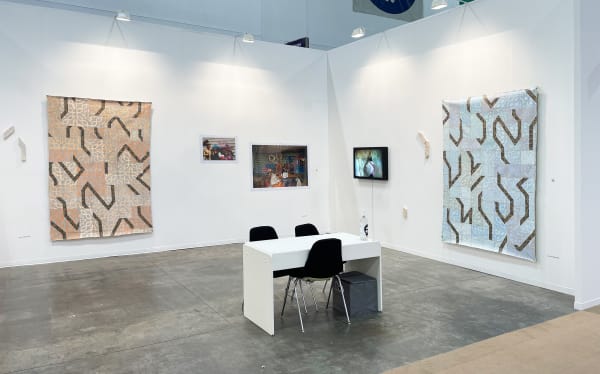
ZONAMACO - Mexico
Magdalena Correa, Paula Valdeón 9 - 13 Feb 2022ZⓈONAMACO México Arte Contemporáneo is the biggest art fair in Latinamerica. It has four sections: Main Section / ZⓈONAMACO Ejes, curated by Direlia Lazo (Havana, 1984) / ZⓈONAMACO Sur, curated by Luiza Texeira de Freitas (Río de Janeiro, 1984) / ZⓈONAMACO Modern Art, curated by Esteban King (Mexico City, 1986)Read more -
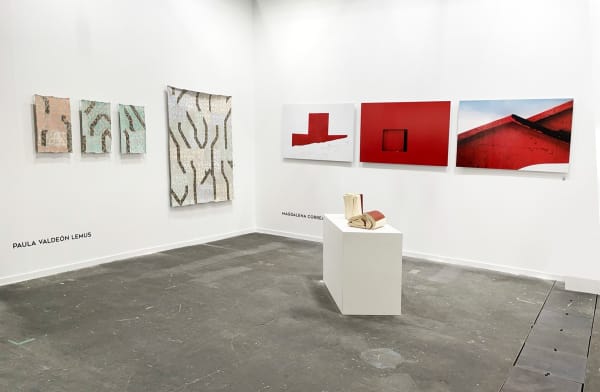
Estampa - Madrid
Magdalena Correa, Paula Valdeón, Ana Sanchez, Javier Erre 21 - 24 Oct 2021We are witnessing a conceptual as well as physical evolution of the established ideas of what is considered art, formats disappear, works merge with their...Read more


